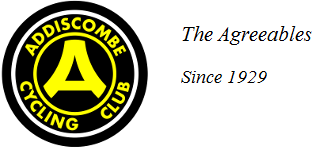I'm away for a few days but I had time to knock up Paul's results from his LP test last night.
I would like to thank Paul for letting me test him and for allowing me to share his results.
[img]http://i161.photobucket.com/albums/t209/sbc205/Paul1.jpg[/img]
[img]http://i161.photobucket.com/albums/t209/sbc205/Paul2.jpg[/img]
[img]http://i161.photobucket.com/albums/t209/sbc205/paul3.jpg[/img]
I've also posted the results on the FaCT forum.
http://www.fact-canada.com/discus/messa ... 1219985582
Paul Tunnell's LBP test 28-08-08
21 posts
• Page 1 of 2 • 1, 2
- Robh
- lives on this board 24/7!!!
- Posts: 1209
- Joined: Fri Dec 13, 2002 2:34 pm
- Location: West Sussex, Crawley
Re: Paul Tunnell's LBP test 28-08-08
[quote="Sean Hogan - 何祥"]Age : 30! 









Oops...Well it was late when I did the typing, thanks for spotting the error.
- Robh
- lives on this board 24/7!!!
- Posts: 1209
- Joined: Fri Dec 13, 2002 2:34 pm
- Location: West Sussex, Crawley
Re: Paul Tunnell's LBP test 28-08-08
Interesting stuff from the FAcT forum Rob, especially about Paul's breathing rate slowing down as he got more watts out.
I wonder if that is a true result.
I personally think PVT is nearer 35 than 30
I wonder if that is a true result.
I personally think PVT is nearer 35 than 30
-

Michelle - lives on this board 24/7!!!
- Posts: 958
- Joined: Tue Oct 09, 2007 9:17 pm
- Location: Hurst Green
Re: Paul Tunnell's LBP test 28-08-08
No wonder I kick his ass...

-

-Adam- - lives on this board 24/7!!!
- Posts: 3515
- Joined: Thu Jan 12, 2006 9:38 pm
- Location: Kingston/Epsom, well, everywhere really!
Re: Paul Tunnell's LBP test 28-08-08
That's shi*mano for you 
-

mrP(Boonen)VT - lives on this board 24/7!!!
- Posts: 4430
- Joined: Mon Dec 02, 2002 9:10 pm
- Location: kitchen chair
Re: Paul Tunnell's LBP test 28-08-08
[quote="mrP(Boonen)VT"]That's shi*mano for you 
Is that some sort or bizarre admission that Shimano really is better!? Haha
-

-Adam- - lives on this board 24/7!!!
- Posts: 3515
- Joined: Thu Jan 12, 2006 9:38 pm
- Location: Kingston/Epsom, well, everywhere really!
Re: Paul Tunnell's LBP test 28-08-08
[quote="-Adam-"][quote="mrP(Boonen)VT"]That's shi*mano for you 
Is that some sort or bizarre admission that Shimano really is better!? Haha
Not at all my good man. Rob's bike was set up for me to ride had that funny gearing on and I kept shifting up instead of down
-

mrP(Boonen)VT - lives on this board 24/7!!!
- Posts: 4430
- Joined: Mon Dec 02, 2002 9:10 pm
- Location: kitchen chair
